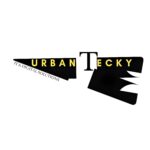A website’s functionality, performance, and user experience are all strongly impacted by the programming language selection made in the dynamic field of web design. This thorough book explores the benefits, use cases, and factors that influence this crucial choice to simplify the process of choosing the best programming language for web design.
Let’s discuss a few crucial web design concepts:
1) Understanding the Role of Programming Languages in Web Design:
At the core of every interactive and visually appealing website lies a programming language that facilitates the creation and functionality of web pages. Programming languages provide the instructions and logic that enable browsers to interpret and render the content presented to users by Urban Tecky. The choice of programming language determines how seamlessly a website can handle dynamic content, user interactions, and data processing.
2) Commonly Used Programming Languages in Web Design:
The landscape of web design is diverse, with a range of programming languages catering to different needs and preferences.
Key languages include:
- HTML (Hypertext Markup Language): Fundamentally, HTML is the backbone of web design, providing the structure and basic content of a webpage.
- CSS (Cascading Style Sheets): Working in tandem with HTML, CSS adds style and visual appeal to web pages, controlling layout, colors, and typography.
- JavaScript: A versatile scripting language, JavaScript enables dynamic content, interactive features, and client-side scripting, making web pages responsive to user actions.
- PHP (Hypertext Preprocessor): Often used for server-side scripting, PHP facilitates dynamic content generation, database connectivity, and server-related tasks.
- Python: Known for its readability and versatility, Python is utilized in web development for tasks ranging from backend development to data processing.
- Ruby: Renowned for its elegant syntax, Ruby is often employed with the Ruby on Rails framework, streamlining web application development.
3) Determining the Nature of the Website:
The nature and purpose of the website play a pivotal role in selecting the appropriate programming language. For static websites with minimal interactivity, HTML and CSS may suffice. However, dynamic websites, e-commerce platforms, or interactive applications require more robust languages such as JavaScript, PHP, or Python to handle complex functionalities and user interactions.
4) Frontend vs. Backend Development:
The division between frontend and backend development further influences the choice of programming language. Frontend development focuses on user interfaces, and languages like HTML, CSS, and JavaScript are crucial for creating responsive, visually appealing designs. On the other hand, backend development involves server-side operations, and languages like PHP, Python, and Ruby are commonly used for managing databases, handling user authentication, and processing server-related tasks.
5) Scalability and Performance Requirements:
The scalability and performance demands of a website are crucial factors in language selection. High-traffic websites or applications with complex functionalities may require languages optimized for performance, such as JavaScript (Node.js) for scalable server-side operations or languages like Java for enterprise-level applications.
6) Database Integration:
Web design often involves database integration to manage and retrieve data. Programming languages like PHP, Python (Django), and Ruby (Ruby on Rails) are well-suited for interacting with databases, allowing seamless integration between the front and backend components of a website.
7) Community Support and Resources:
The strength of a programming language’s community support is a valuable consideration. Robust communities contribute to extensive documentation, tutorials, and a wealth of resources that aid developers in troubleshooting, learning, and advancing their skills. Widely adopted languages such as JavaScript and Python boast expansive communities, fostering collaboration and knowledge sharing.
8) Development Frameworks:
Choosing a programming language often goes hand in hand with selecting a development framework. Frameworks provide pre-established structures and libraries that streamline development processes. For instance, JavaScript has frameworks like React and Angular for frontend development, while Python has Django and Flask for backend development. Understanding the compatibility and advantages of different frameworks is integral to making an informed decision.
9) Security Considerations:
Security is paramount in web design, especially when handling user data and sensitive information. Certain programming languages, such as Java and Python, are lauded for their built-in security features. Additionally, adherence to secure coding practices and regular updates contribute to the overall security posture of a website.
10) Adaptability and Future-Proofing:
The tech landscape is ever-evolving, and choosing a programming language with adaptability and longevity in mind is crucial. Languages like JavaScript have witnessed sustained popularity and constant updates, ensuring their relevance in modern web development. Consideration of the language’s ability to integrate emerging technologies and trends contributes to future-proofing a web design.
11) Budget and Resource Constraints:
The financial and human resources available for a web design project influence the choice of programming language. Open-source languages such as Python and PHP, with extensive libraries and frameworks, often prove cost-effective and efficient for small to medium-sized projects. Enterprises with larger budgets may opt for languages like Java or C# for robust, scalable solutions.
12) User Experience and Interactivity:
The level of interactivity and the overall user experience (UX) desired for a website play a pivotal role in language selection. JavaScript, with its ability to create dynamic and interactive interfaces, is integral to achieving a seamless and engaging user experience. Consideration of the user interface (UI) design and the interactive elements required to guide the choice of front-end technologies.
Conclusion:
Choosing the right programming language for web design is a multifaceted decision that demands careful consideration of the website’s nature, functionality, and long-term goals. From the foundational HTML and CSS to the dynamic capabilities of JavaScript and backend languages like PHP and Python, each language brings unique strengths to the table. By aligning these strengths with the specific requirements of a project, developers can craft web designs that not only meet immediate needs but also evolve seamlessly with the ever-changing landscape of digital innovation. The art of selecting the right programming language is, in essence, a strategic investment in the success and sustainability of web design endeavors.


Pingback: Programming Language for Web Design | Urban Tec...